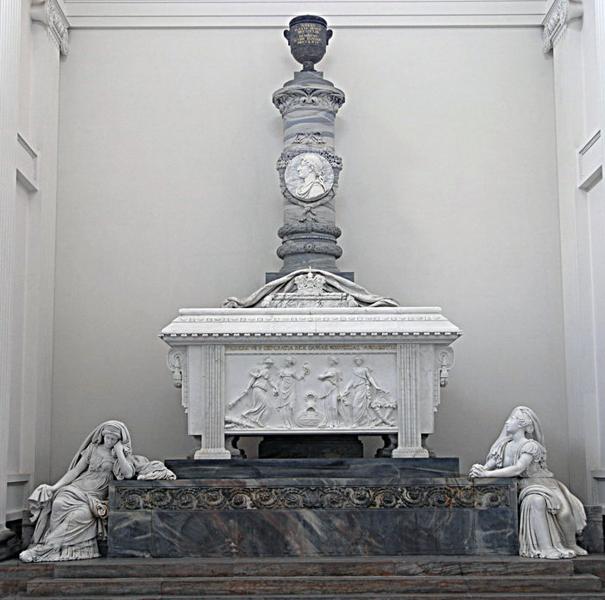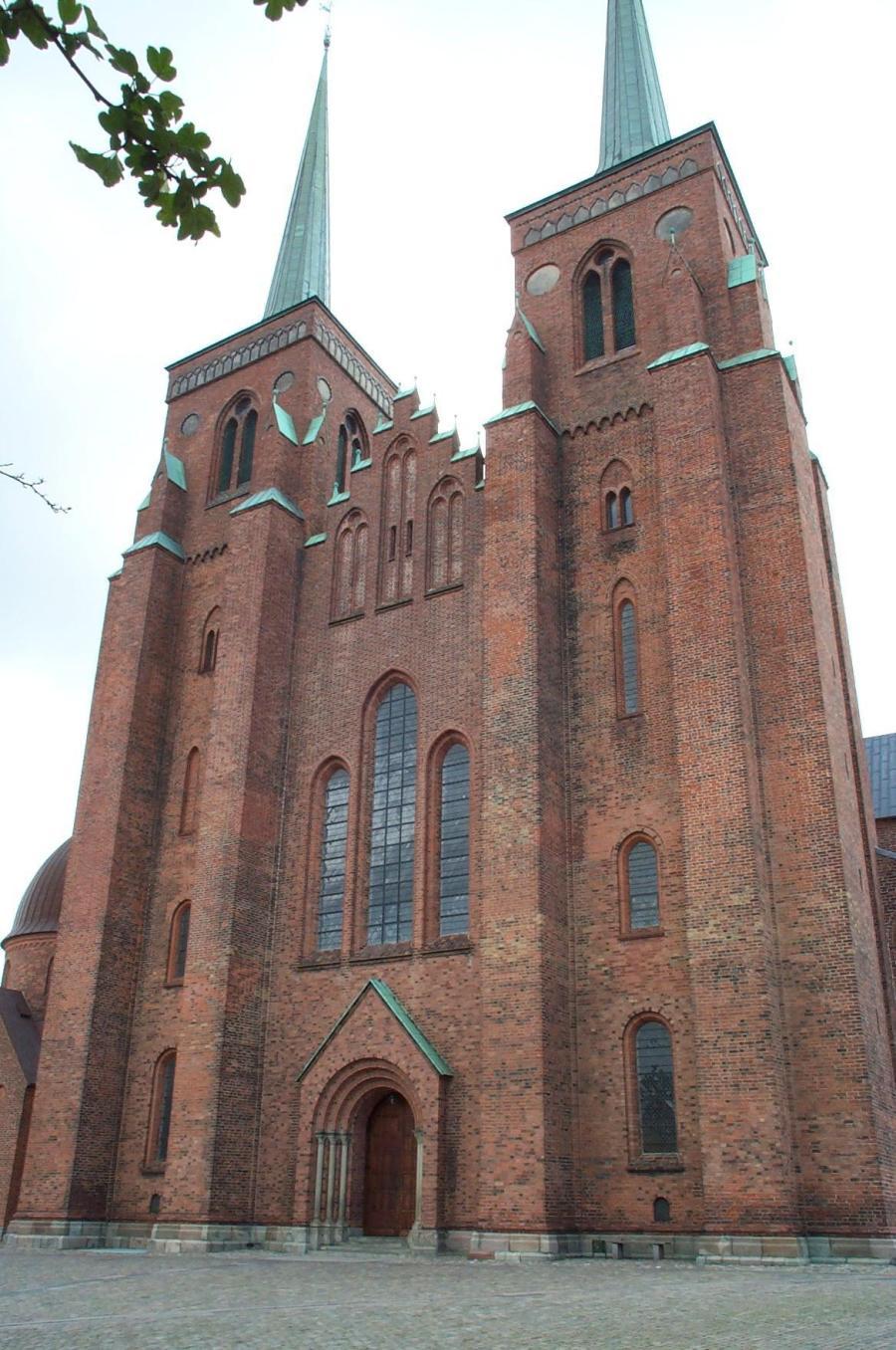About the Artist
Johannes Wiedewelt
Born: Copenhagen, 1 September 1731
Died: Copenhagen, 14 December 1802
Nationality: Danish

Monument to Frederik V
Johannes Wiedewelt, 1766-69.
Collection
Roskilde Cathedral
Documentation
Danish art historian Else Marie Bukdahl identifies the Neoclassical elements in the Monument:
“The abstract principles, the basic structure of antique art, appear as the most obvious qualities of the monument. And Wiedewelt’s handling of these principles creates an effect of Classical unity, marked by serenity, clarity and solemnity. Horizontality is emphasized. The closely integrated type of composition that evolved in the late Renaissance and Baroque periods has been rejected in favour of one in which the constituent elements have been deliberately separated and then juxtaposed. The monument exhibits only few, but very salient divisions. The figures appear either in profile or full face. The relief on the wall of the sarcophagus is clearly inspired by The Borghese Dancers, a neo-Attic relief now in the Louvre.”
“[T]he quality of Classical unity becomes clearly apparent in Wiedewelt’s work if we compare it to a contemporary sepulchral monument, that for Louis XV’s son, the Dauphin of France, and his wife. Created by Winckelmann’s teacher Guillaume Coustou in 1777, this monument clearly combines classicizing figures with a Baroque composition, a clear example of a closely integrated type of composition with pronounced diagonal effects.”
Bukdahl, Else Marie. “The Roots of Neo-classicism. Wiedewelt, Thorvaldsen and Danish Sculpture of our Time,” The Roots of Neo-classicism (Copenhagen: The Royal Danish Academy of Fine Arts, 2004), 22 and 24.
Karin Kryer notes that Wiedewelt provided a detailed description of his Monument to Frederik V :
“In Wiedewelt’s descriptions, written on the approved drawing, he emphasizes the significance of the gestures and the expressions of the figures. Prudence should appear thoughtful, looking towards Fortitude as if addressing her. Peace holds her hand, and the movements and the faces should show that Fortitude is listening to the advice of Prudence. The Felicity of the Century is speaking to Fortitude, but is pointing at the same time towards the crossed cornucopiae, the symbol of Abundance in the Kingdoms of Denmark and Norway, the result of the king’s successful government.
Wiedewelt calls the column behind the sarcophagus ‘The Column of Apotheosis’. It is furnished with his late Majesty’s portrait medallion and supports an urn on the top. This is an allusion to the columns of Roman emperors, who were automatically deified when they died...This would have been quite blasphemous if we did not at the same time recall the absolute monarch’s particular role as a king by the grace of God and as God’s deputy on earth. The kingdoms of Denmark and Norway, two mourning women, flank the entire monument. They both wear diadems – that of Denmark displaying the lions and hearts taken from the Danish coat-of-arms, while the Norwegian one shows the lion from the coat-of-arms of Norway.”
Kryger also considers Wiedewelt’s Monument to Frederik V important:
“The monument is the supreme example of Danish Neo-classical sepulchral art. Its majestic appearance and use of ideas fulfil its purpose magnificently.”
Karin Kryger, “Wiedewelt and Allegory,” in Marjatta Nielsen and Annette Rathje, eds., Johannes Wiedewelt. A Danish Artist in Search of the Past, Shaping the Future (Copenhagen: Museum Tusculanum, 2010), 119-20 & 120.
